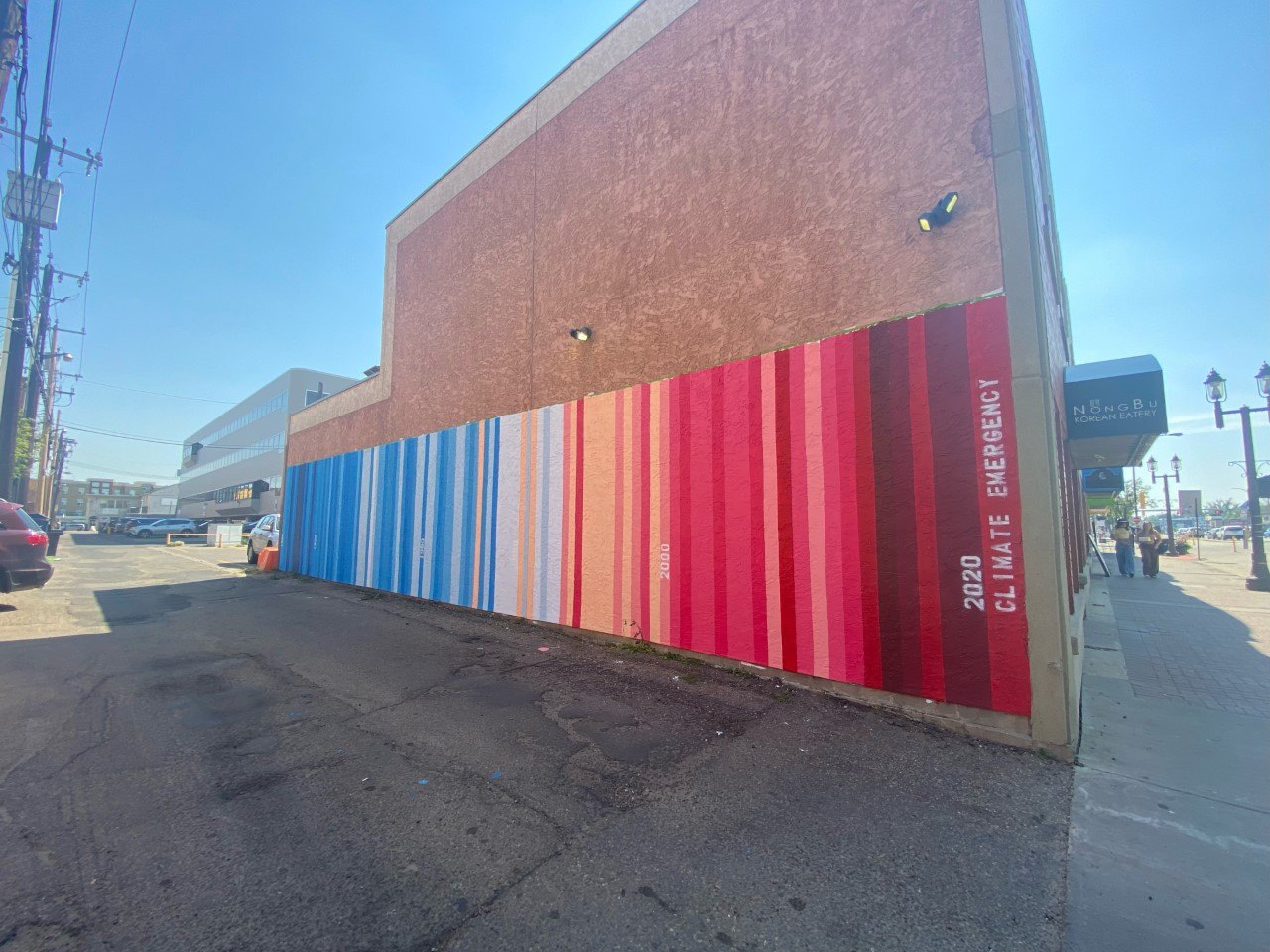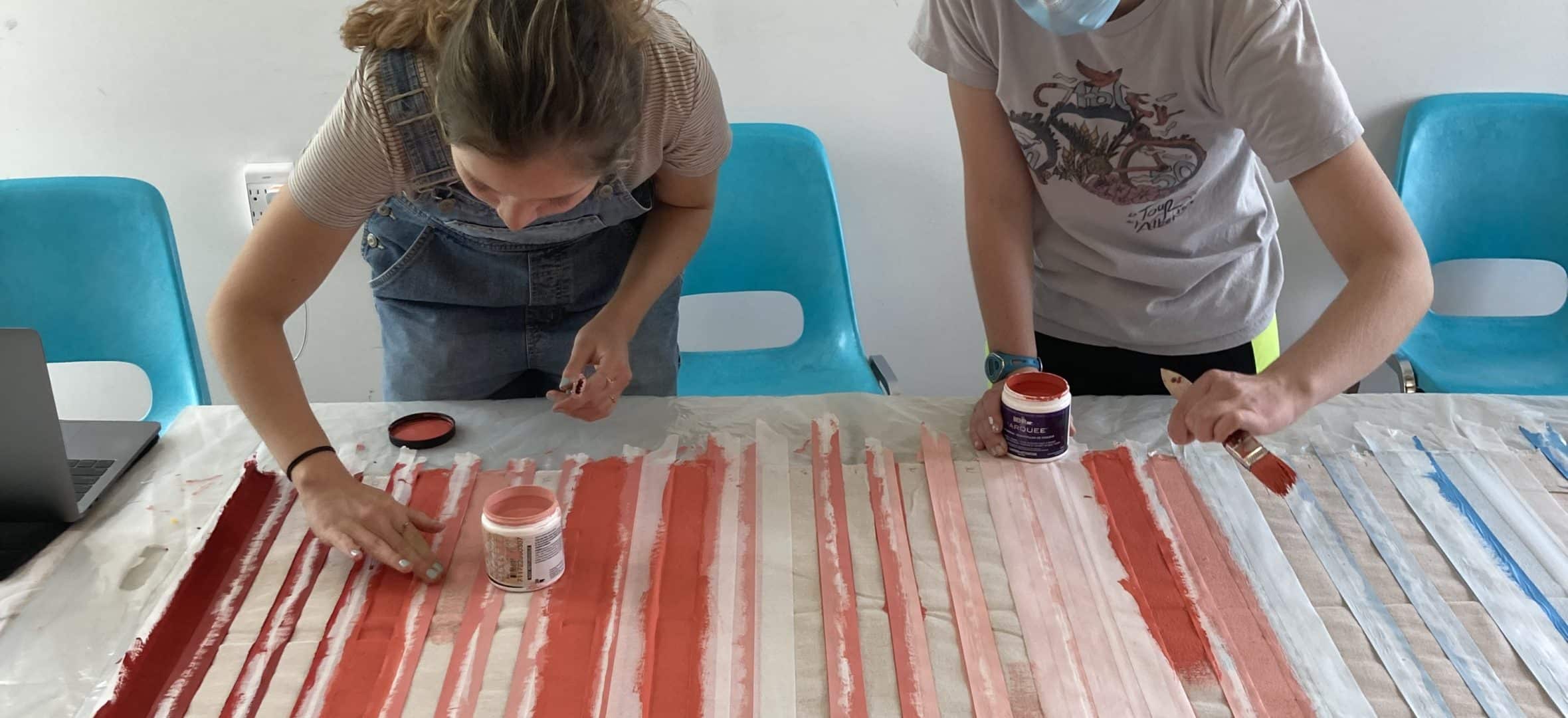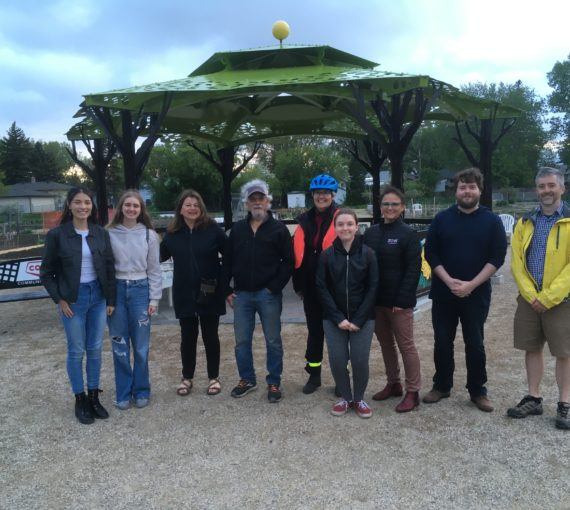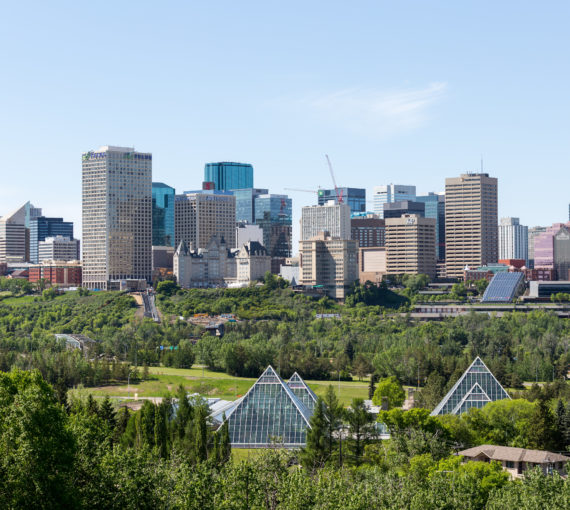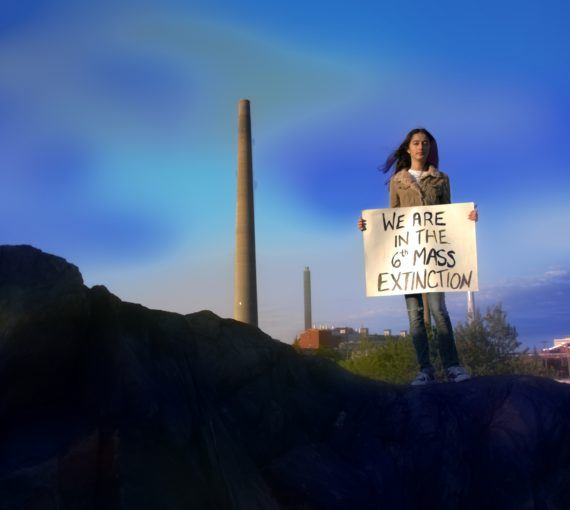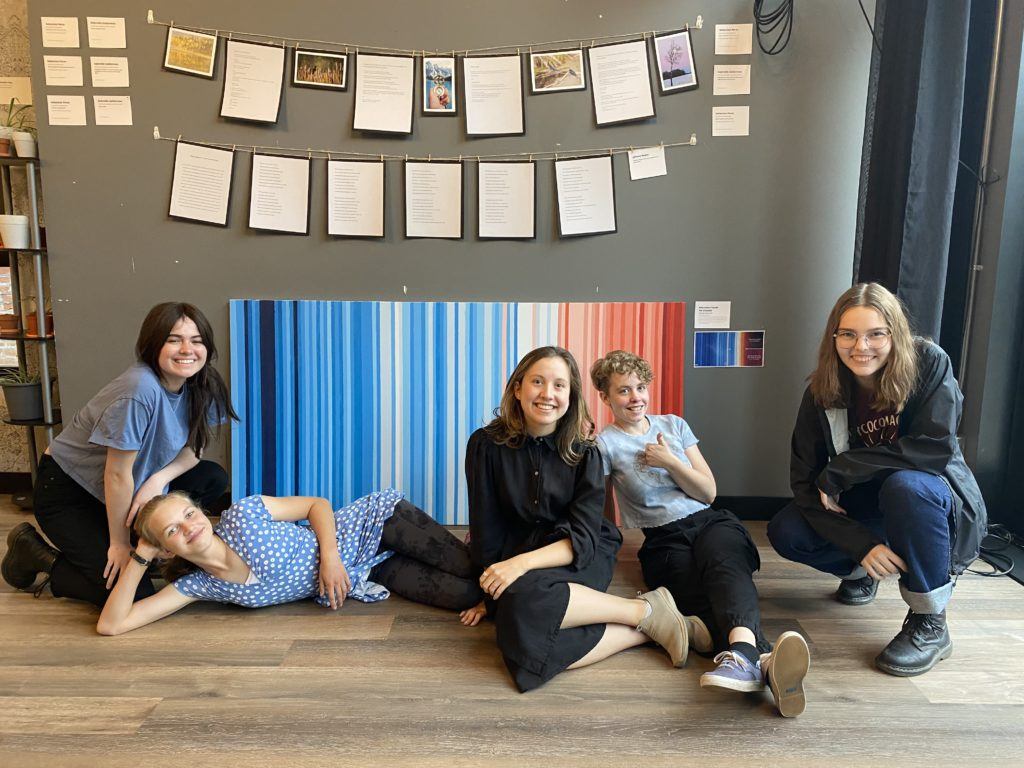
Monica Figueroa (centre) and members of Edmonton Youth for Climate at the art exhibition they hosted in July 2022. (Photo: Emily Bonanni)
Edmonton is located within Treaty 6 territory and within the Métis homelands and Métis Nation of Alberta Region 4. It is the traditional territory of many First Nations such as the Nehiyaw (Cree), Denesuliné (Dene), Nakota Sioux (Stoney), Anishinaabe (Saulteaux) and Niitsitapi (Blackfoot).
When Monica Figueroa moved from Colombia to Edmonton in 2019, she was shocked by the amount of energy people required to live in Alberta’s capital city. In Bogotá, where she’d grown up, there was no need to spend energy on heating or cooling her family’s home, and most of their food was produced locally.
“I moved to a place where you need to have heat in order to survive,” she says, recalling the transition. “At this time, I was also learning more about the climate crisis and felt uneasy with my personal contribution to CO2 emissions.”
The experience helped her understand how challenging — though necessary — it is for Edmonton to significantly lower its carbon emissions. The fact that many Edmontonians’ livelihoods depend on the fossil fuel industry make the challenge even greater.
That’s why Figueroa, now a third-year physics student at the University of Alberta and a David Suzuki Foundation Gaptivist, is working to expand the climate movement in Edmonton through avenues like art. She believes this can help people deepen their understanding of the climate crisis by showing climate change as a human issue, not just an abstract collection of data.
“My interest [in climate action] comes from seeing a lot of inequalities in my home country,” she explains. “I grew up seeing social injustices and how they perpetuate themselves. As I learned about the climate crisis, I started to understand that those social inequalities were only going to get worse as the planet warms.”
I grew up seeing social injustices and how they perpetuate themselves. As I learned about the climate crisis, I started to understand that those social inequalities were only going to get worse as the planet warms.
Monica Figueroa, Gaptivist
After moving to Edmonton, she joined a group called Edmonton Youth for Climate, which formed to organize student climate strikes, inspired by Swedish activist Greta Thunberg. “We wanted to tell grown-ups that it’s an issue that’s really important to us,” Figueroa says. “We didn’t feel our voices were represented in media and politics, and we wanted to press government to take action.”
The group began organizing local strikes, including a gathering of 10,000 concerned residents who demonstrated at the Alberta legislature when Greta Thunberg visited in October 2019.
But when COVID hit in 2020, Edmonton Youth for Climate had to scale back its organizing efforts. The organizers still managed to host some community projects and a debate for the federal election, but in-person gatherings were largely put on hold.
Art for climate action
Finally, in spring 2022, Figueroa launched a community project with the aim of drawing more people into the climate movement — particularly those who might not show up for a climate strike.
In May, she and her fellow activists invited Edmonton residents to attend an online art workshop led by artist and facilitator Dona Nham. Participants began by reflecting on what concepts of “home” and “climate change” meant to them, then wove their responses into a collaborative poem. They spoke and wrote about the future they want, then worked on personal art projects.
A month later, Edmonton Youth for Climate hosted the second part of this project: an in-person art build open to everyone. Participants shared food, had conversations about climate change and how it affected them and created art with supplies provided.
The project culminated in a public exhibition of the 60 art pieces participants created, which include paintings, poems, a song and a visual representation of warming stripes, which depict how the world has warmed over the past 150 years. (Edmonton Youth for Climate recently turned that image into a mural, which is on display at 8103 104 Street NW). On July 2, Figueroa and her colleagues put the artworks on display at an event space and invited passersby to come in and experience them. Many people were moved, even to tears.
“That shows that art is able to transmit a message and convey ideas that a news article and other types of media cannot,” she says.
Art is able to transmit a message and convey ideas that a news article and other types of media cannot.
Monica Figueroa, Gaptivist
Even Edmonton Mayor Amarjeet Sohi dropped by. This gave the organizers a chance to speak with him about the city’s energy transition strategy, which city council passed in 2021. “We’re really trying to push for the funding that we need for the strategy to come to reality,” Figueroa says.
Climate conversations expand the movement
She wants the city to reach net-zero emissions, or as close to this as possible. She also wants to see a just transition to clean energy, with help for fossil fuel industry workers transitioning to the clean-energy sector.
“It’s a hard thing to do, to get everyone on board,” she admits. Which is why during the rest of her Gaptivist term, she’ll be developing and launching climate communication workshops, helping people (and in particular activists) to have better conversations with friends and family.
“I found that at the beginning of my climate journey there was a lot of discourse around doom and fear and that the world’s going to end,” she says. “But that’s not very sustainable for a person to continue to put in the work for a better future.” She wants climate advocates to learn to communicate their feelings and anxieties as well as the need for everyone to get involved in the movement.
I found that at the beginning of my climate journey there was a lot of discourse around doom and fear and that the world’s going to end. But that’s not very sustainable for a person to continue to put in the work for a better future.
Monica Figueroa, Gaptivist
Figueroa is also exploring how organizers can use science and emotion to communicate why the climate crisis matters to everyone, regardless of ideology. And recently, while reading Saving Us: A Climate Scientist’s Case for Hope and Healing in a Divided World by Katharine Hayhoe, she came upon a line that summed it up perfectly.
Hayhoe writes: “To care about climate change, you only need to be one thing, and that’s a person living on planet Earth who wants a better future.”

